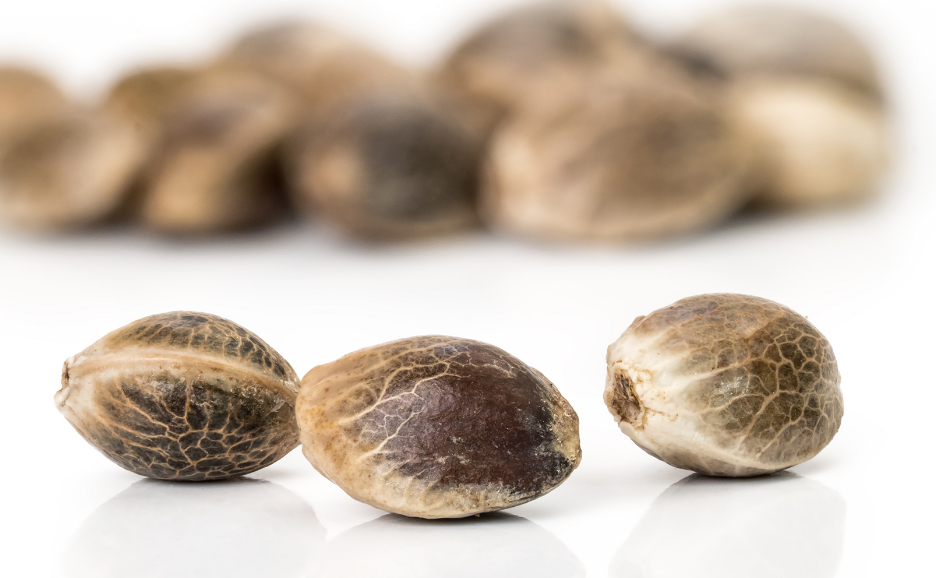In a move that’s shaking up the cannabis world, President Donald Trump signed a bill last week that not only cracks down on hemp-derived THC products but also targets marijuana seeds. Starting in November 2026, seeds that grow into plants with more than 0.3% THC could become federally illegal, flipping years of legal gray areas upside down. What does this mean for growers, businesses, and everyday users? Let’s dive in.
The bill, tucked into a massive spending package to end a government shutdown, redefines what counts as legal hemp. It sets a strict limit: any consumable hemp product can’t have more than 0.4 milligrams of THC per serving or container. But the real surprise hits the seed market.
This isn’t just about edibles or vapes; it’s about the building blocks of cannabis cultivation. Marijuana seeds have long been sold online and across states under the idea that they’re hemp if they test below 0.3% THC themselves. Now, the law looks at what the seeds will produce. If the adult plant exceeds that THC threshold, those seeds are out.
Legal experts warn this could shut down a huge chunk of the industry. Attorney Jason Adelstone pointed out that high-THC genetics, which include most marijuana strains, will fall under federal prohibition. That’s a game-changer for breeders and sellers who’ve relied on DEA guidance from years past.
The grace period gives everyone until November 2026 to adjust, but panic is already setting in. Shops in states like Texas, where hemp products boomed, now face a one-year countdown.
Impact on Growers and Businesses
Home growers and commercial operations are scrambling. Imagine ordering seeds online for your backyard setup, only to find out they’re now classified as marijuana under federal law. Interstate shipping? Forget it. Importing from abroad? That’s risky too.
This ban overrides state laws in places where cannabis is legal for recreational or medical use. Even in states like California or Colorado, federal rules could complicate things. Businesses that sell seeds for breeding high-quality strains might see their operations grind to a halt.
Take a look at the numbers: The U.S. hemp industry was worth about $28 billion in recent estimates from industry reports. A big slice of that comes from intoxicating products like Delta-8 and THCA, which this law targets. Seeds alone make up a niche but vital market, supporting everything from medical marijuana programs to craft growers.
- Seed banks could vanish: Many online sellers rely on the old loophole that seeds aren’t tested for mature plant THC.
- Prices might skyrocket: Limited legal options could drive up costs for compliant, low-THC seeds.
- Innovation stalls: Breeders working on new strains may move underground or overseas.
One farmer in Oregon told me he’s already pivoting to true industrial hemp, the kind used for fiber and non-intoxicating CBD. But for those in the marijuana space, it’s a tough pill to swallow.
The bill’s backers say it’s about safety. Unregulated hemp products have led to mislabeled items, youth access issues, and health scares. Think gas station gummies with unknown potency. Supporters argue this protects kids and cleans up the market.

Roots of the Hemp Loophole
This all stems from the 2018 Farm Bill, which legalized hemp with under 0.3% THC. That opened the door for a flood of products, including those that get you high through clever chemistry. Delta-8 THC, made from hemp, became a legal alternative to marijuana in states where pot is still banned.
But lawmakers saw problems. Kids buying edibles online, inconsistent testing, and states struggling to regulate. Fast-forward to now: After a historic government shutdown, Congress slipped this ban into funding bills. Trump signed it, reversing parts of his own 2018 approval.
Remember, hemp was fully prohibited for decades until that Farm Bill. Now, we’re circling back, but with tweaks. The new law gives states until November 2026 to set their own rules on intoxicating hemp. If they don’t, the federal ban kicks in hard.
Ohio is already moving fast, with regulations expected this week. Other states might follow, creating a patchwork of laws. That’s confusing for consumers and businesses alike.
Pushback and What’s Next
Not everyone’s on board. Republican Congresswoman Nancy Mace is fighting back with a bill to block the ban’s rollout. She’s rallying support, vowing to battle it over the next year. On the flip side, some senators like Rand Paul tried amendments to soften the blow but failed.
The fight highlights a bigger divide in cannabis policy. While marijuana remains a Schedule I drug federally, states have legalized it in droves. Rescheduling talks have dragged on, with promises from leaders like Trump to look into it. Yet here we are, tightening rules on hemp instead.
For readers, this could mean fewer options at stores or higher prices for legal weed. If you’re a medical user relying on specific strains, sourcing seeds just got trickier. Businesses face closures, jobs lost, and a potential black market boom.
Here’s a quick breakdown of key dates in a simple table to track the timeline:
| Date | Event |
|---|---|
| 2018 | Farm Bill legalizes low-THC hemp |
| November 2025 | Trump signs new ban bill |
| January 2026 | Ban provisions start, with grace period |
| November 2026 | Full enforcement, seeds affected |
Advocates hope for reversals, maybe through court challenges or new legislation. But for now, the clock is ticking.
This hemp THC ban isn’t just a policy tweak; it’s a seismic shift that could reshape how Americans access cannabis, from seeds to shelves. It sparks outrage over lost freedoms, hope for safer regulations, and fear of industry wipeouts. As debates heat up, it reminds us how fragile progress can be in this evolving field.
